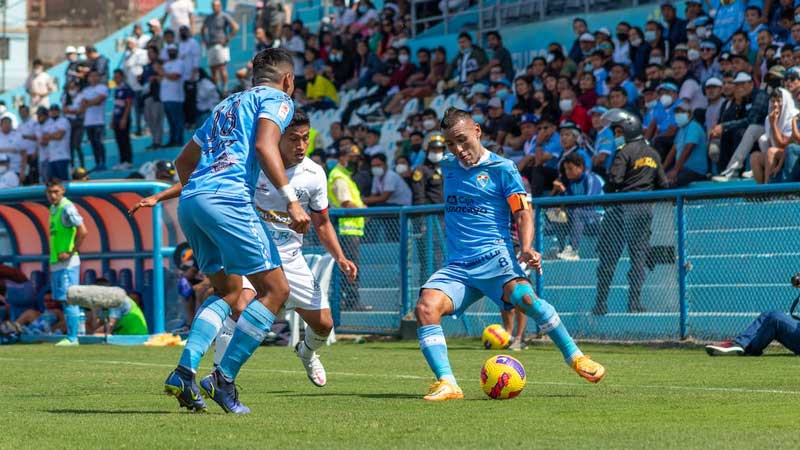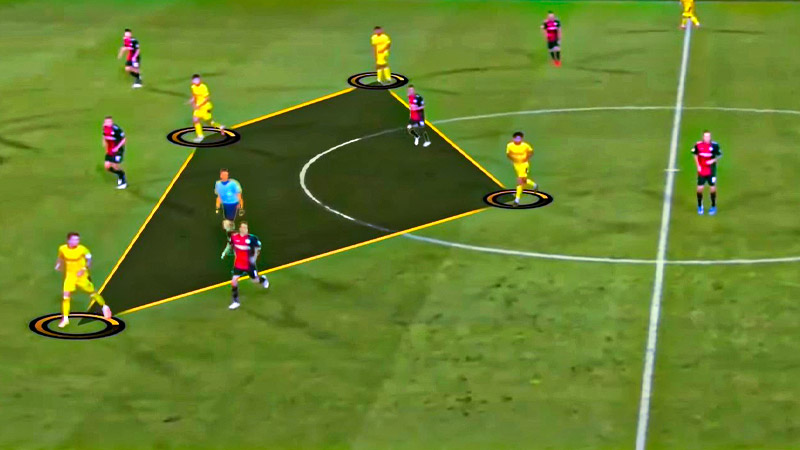Our favorite sport soccer is full of tactics. One such strategy is the 4-4-2 soccer formation, idealized during the reign of English football.
If you are thinking about how 4-4-2 varies from our previously described 4-3-3 formation. You will find answers here today!
The 4-3-3 formation is attacking in nature while the 4-2-2 is completely a counter-attack formation.
As per the soccer experts, the 4-2-2 has left an incredible mark on the play with harmony and organization.
We believe after the 4-3-3 formation, the next thing you need to know is the 4-4-2 formation. Let’s explore this classic soccer formation and learn its details.
What Is 4-4-2 Soccer Formation?
Unlike the other soccer formations, the 4-4-2 is known for its simplicity and flexibility. Plus, the wide range of attacking options you have with this formation is another reason why it is so popular.
In this formation, four defenders, four middle fielders, and two forwards participate. Four defenders include two central defenders and two full-backs. They build up the defensive lineup.
While four middle fielders include two central midfielders and two wide midfielders. We also know the as the wingers.
The central midfielders control the pace of the game and link defense to attack. Meanwhile, the wingers provide width and contribute to both offensive and defensive setups.
The rest of the two players are the attacking two forwards. Each of them contributes to their partnership and securing successful goals.
It works this way – one of them can excel at hold-up play while the other forward focuses on scoring!
Here’s how the 4-4-2 formation distributes soccer players. Each of them has a significant and unique role to play and deliver a successful counterattack.
Variations:
Different variations are available for the 4-4-2 soccer formation. Some of the popular ones are,
- 4-4-2 Diamond Formation.
- 4-4-1-1 Formation.
- 4-5-1 Formation.
You can recreate the variations of 4-4-2 variations with your lineup builder.
Where Did It All Begin?
Soccer was never too popular for the English! Until the invention of the 4-4-2 formation.
Many believe the 4-4-2 formation developed the foundation of the English game. A lot of appraisal goes to the World Cup manager Sir Alf Ramsey who is behind the development of this formation.
The 4-4-2 came to highlight around the 1960s and 1970s. However, there is a strict theory that the 4-4-2 was the initial idea of Russian manager Viktor Maslov.
At the end of the 1950s, he improvised the remarkable 4-2-4 formation of Brazil and evolved it into the 4-4-2 formation.
Later in 1966, the formation played a significant role in England’s World Cup triumph and AC Milan’s European dominance during the late 1980s and early 1990s.
Here’s the history of Soccer Formation in short. Keep reading with us to know more about the classic formation.
When to Use the 4-4-2 Formation?

You can start the formation at any time of the play – at the beginning of the play or simply after the half break.
But experts say you will get better results when you apply the 4-4-2 formation against a possession-focused team.
Or, when you are playing against a significantly powerful team where a toe to toe fight would be in vain.
Why Is 4-4-2 No Longer Used?
The 4-4-2 formation was once a prevailing and widely used tactical soccer setup. Unfortunately, its reputation has declined in these few years.
We believe the 4-4-2 soccer formation is highly effective up to this day. But it’s the lack of passing angle that is the problem.
It has been proved that formations with three central midfielders offer more passing lanes and support for ball circulation.
With the 4-4-2 formation, your opponent can easily retrieve the ball from angles that you didn’t even imagine. It happens because they get more width from their position in this formation.
As a result, your opponent can gain numeric privilege in the center of the pitch. If not carefully and wisely handled, you will have a challenging time maintaining possession and transitioning play.
Should You Still Try 4-4-2 Soccer Formation?
The formation is not completely out of the show! You can still take your chances because with the 4-4-2 formation, you can –
- The 4–42 soccer formation is purely made for the counter-attack. This is proven because most of the soccer teams who are great at counterattacks use this formation including Manchester United, Atletico Madrid, and Leicester City.
- It makes the defense really hard, utilizing two of the attackers at their full potential. Even if the passing lane lacks to some extent, any 1 Vs 1 scenario is quite uncommon when you form this soccer formation.
- As said earlier, utilize the formation most effectively and it can turn out to be the best for you. Additionally, you can improvise to the Two Banks of Four.
In this formation, you have four defenders and four midfielders aligned in two walls (an 18-yard box and the halfway line).
- Additionally, the dual striker leads with powerful attacking dynamics. One striker can serve as a target man, while the other secures spaces and looks for goal-scoring opportunities.
Here are some why you shouldn’t step back to introduce this formation to your team (if you haven’t already). The 4-4-2 formation can be successfully implemented to develop powerful defense and increase your winning chances.
Last Words
With time, the foundation of soccer changed eventually. But the 4-4-2 soccer formation stayed the same with a few variations adapted!
It is good news that the 4-4-2 hasn’t been completely out of the show yet. Modern coaches still use this formation and suit the formation to their team’s playing style.
We believe this formation has still a long way to go and soon we will see improvements to it!
Let us know what you think of the 4-4-2 soccer formation in the comment section below. Also, share this article with other soccer lovers to explore the expertise of soccer together!







